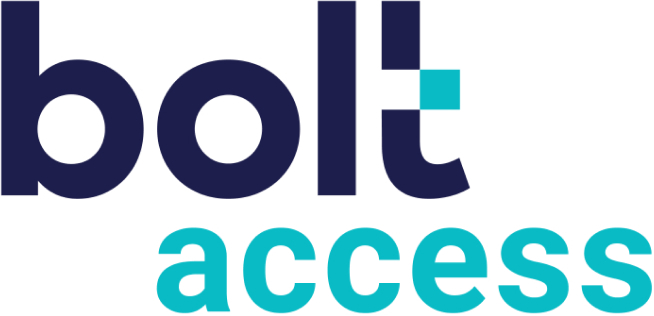
"More people than ever go online for insurance. It’s a convenient way to learn about policies, compare pricing and see which options best fit their needs. In fact, 74 percent of insurance shoppers research information online and get quotes from insurer websites, explains the market research team at J.D. Power. As an independent agent, it’s vital that you understand what customers expect from your website in order that you provide the optimal user experience. You want a potential customer’s journey to be as smooth and seamless as possible. Effective web design boils down to providing visitors with the information they need in two seconds or less, Jamillah Warner at Small Business Trends writes. To accomplish this, you’ll need to answer six questions customers have when they land on your website.
Q: What Can You Do For Me?
The common denominator for every person on your site is that they’re seeking a solution to their insurance problems. Maybe their current coverage isn’t adequate. Maybe they’re confused as to how a particular type of insurance works and need clarification. Or maybe they’re looking for guidance on selecting the best policy based on their circumstances. Specifics vary, but nearly every visitor has some type of issue or concern they’re looking to address. Customers are always looking for solutions to painful problems, agrees Peter Grossman, digital innovator and entrepreneur. And the first step in creating the perfect user experience is letting your customers know what you can do for them. This usually begins with a value proposition. “A value proposition is a clear statement that does three things, conversion optimization authority Peep Laja writes.
- It shows how your product will solve your customer’s problems
- It provides quantified benefits
- It explains why the customer should buy from you instead of someone else.
“You have to present your value proposition as the first thing the visitors see on your homepage but it should be visible in all major entry points of the site,” Laja adds. Beyond that, there are some other things you may want to include such as the types of insurance you specialize in, the locations you serve and your areas of expertise. Between 80-90 percent of potential customers will visit your website before making a decision to purchase, reports Matt Byrom, founder of animated explainer video company, Wyzowl. Getting straight to the point about what you can do for visitors encourages them to explore your site in greater depth and learn more about your company.
Q: Why Should I Trust You?
Trust is a key component of the customer experience. Insurance customers want to know that an independent agent is an industry expert, has their best interests in mind, and won’t try to offer them coverage they don’t need. Trust doesn’t come easy, so initiatives should be taken to build trust upon introduction, UX designer Ozge Ergen writes. But how do you do this? Providing social proof plays a large part, says marketing strategy consultant Ben Jacobson. Testimonials are a good starting point for building trust. Professional, visually compelling testimonials — ideally featuring images of the people who wrote them — lends an element of trust to your website. Including certifications from reputable third-parties such as the Better Business Bureau also goes a long way towards establishing trust, writes entrepreneur and digital marketing expert Mary Fernandez. She also recommends including insurance awards you’ve received, notable customers you’ve served and positive feedback from social media. For example, you might display tweets on your homepage from past and current customers singing your praises. Web design expert Mark Walker-Ford points out that having an “About Us” page enhances credibility because people can put a face to your name. You can include your contact information here or on a dedicated page, which should have a phone number, your email address and the physical street address of your agency, if applicable.
Q: What Product Lines Do You Offer?
Visitors new to your site will know at a glance that you’re selling insurance, but they may not know the specific product lines that are available. So this is definitely something to address on your website. First, visitors will want to know the types of coverage you offer without having to do a ton of research. So if your main focus is on homeowners, auto and life insurance, have those categories just below your logo. In addition to categorizing your insurance products, you should highlight key features, says Mandy Jones, founder of electronic music samples provider Looplicious. Doing so breaks things down in an organized, logical manner. Link each insurance product to an individual page where customers can learn more about it. Clicking through to a homeowners insurance page should provide them with information such as the common risks homeowners face, what’s covered under a policy, and additional coverage options. Including videos can also be useful for this, Jones adds. They’re perfect for briefly explaining various types of insurance in a way that’s easy to understand. Nine out of 10 people say product videos aid in the decision-making process, entrepreneur Mike Templeman points out.
Q: How Much Does It Cost?
If you don’t include a product price, you are simply going to frustrate — and possibly lose — potential customers, says user experience expert Hoa Loranger. In fact, pricing is cited as being one of the most critical pieces of information online. This creates a challenge for independent agents because there are multiple factors that impact the cost of a premium. For instance, a person’s age, gender, medical history and lifestyle are just a few things that affect a life insurance quote, personal finance writer Daniel Kurt explains. So, you can’t always use a single price for insurance coverage. It’s simply not possible. One way agents can get around this is to offer a free insurance quote tool. This allows prospects to painlessly enter basic information like the type of insurance they’re looking for, their needs, zip code, and so on. Within minutes, they’ll have a quote so they’ll exactly how much they can expect to pay. An added plus is this gives you the opportunity to obtain their email address and other critical contact information. That way you can send targeted content at later time to nurture leads and move them through your sales funnel.
Q: How Do I Contact You?
Brand availability is a universal desire. “Before buying your product, customers always have one concern: how to reach the company in case they face any issue with that product,” says digital marketing consultant Sawaram Suthar. “So make sure to have a Contact Us page on the website, mentioning your contact number, email ID, address, etc.” In terms of site location, this should be placed in the main navigation, explains Els Aerts, usability and conversion optimization expert at AGConsult. This makes it accessible so customers can get in touch you easily. Suthar notes that chatbots are quickly becoming an efficient means of customer outreach. In today’s fast-paced world, people expect a fast response. If you’re not in the position to have someone available 24/7, a chatbot is the next best thing. The 24-hour service of chatbots is actually a key selling point for 64 percent of people, author and marketing authority Jay Baer writes. Over one-half (55 percent) say “getting an instant response” is another main benefit, he adds. While chatbots can’t necessarily offer the in-depth response that a human can, they’re great for answering FAQs and pointing people to relevant resources.
Q: How Do I Buy My Insurance Policy?
Let’s say that someone has found your website, done some exploring and wants to go ahead and become a customer. What do they need to do to purchase a policy? This is the final part of creating a great user experience. Your goal is to come up with a way to make this as painless as possible. For example, they might need to provide registration or intake information in order to become a customer. In this case, you could include a secure contact form on your homepage for new customers to fill out and add questions or comments. Once you receive it, you can contact them directly to complete the process and finalize their purchase. The bottom line is that visitors shouldn’t have to wonder what they need to do to become a customer. It should be obvious, and your website should provide an intuitive path for doing so.
Meeting Customer Expectations and Delivering Value
Getting visitors to your website is only part of the equation. You also need to create an amazing experience and provide them with essential information. If not, they may simply turn to a competitor. And the majority do just that: 79 percent of website visitors will go somewhere else if they can’t find what they’re looking for on a website, web design professional Joseph Rinaldi writes. Focusing on these six areas should enhance the user experience, ensure they have the core information they need and help convert more of your leads into satisfied insurance customers. Images by: ronstik/©123RF.com, rawpixel, rawpixel"
Talk to an expert
Contact us
